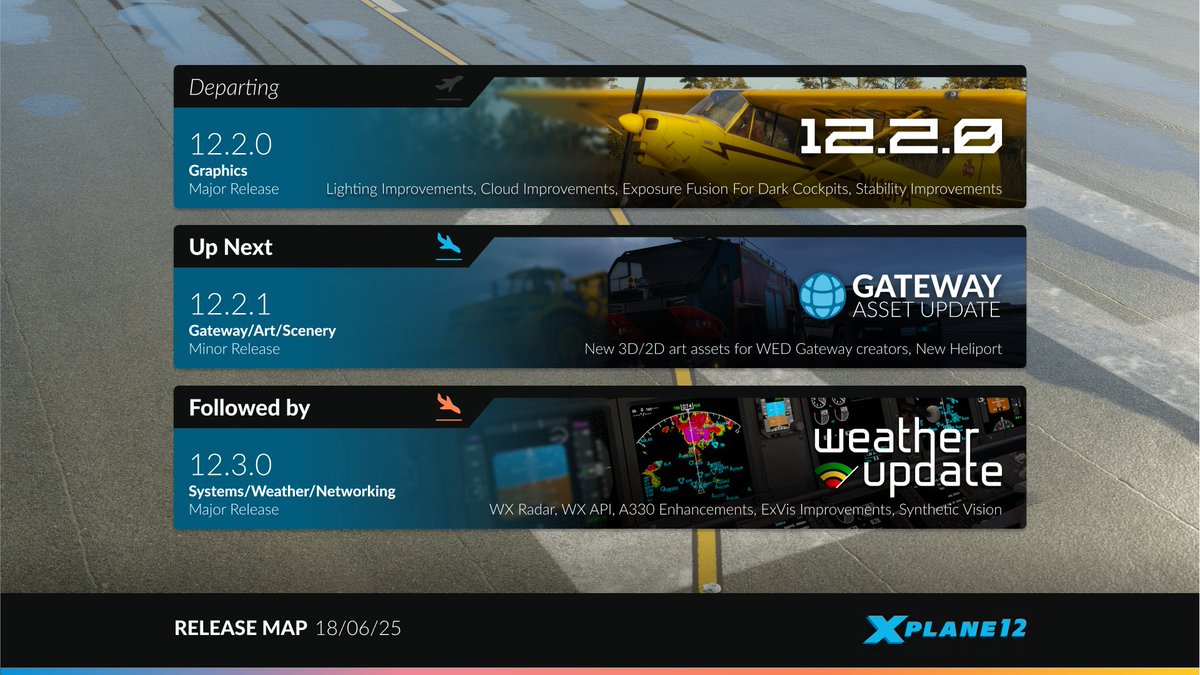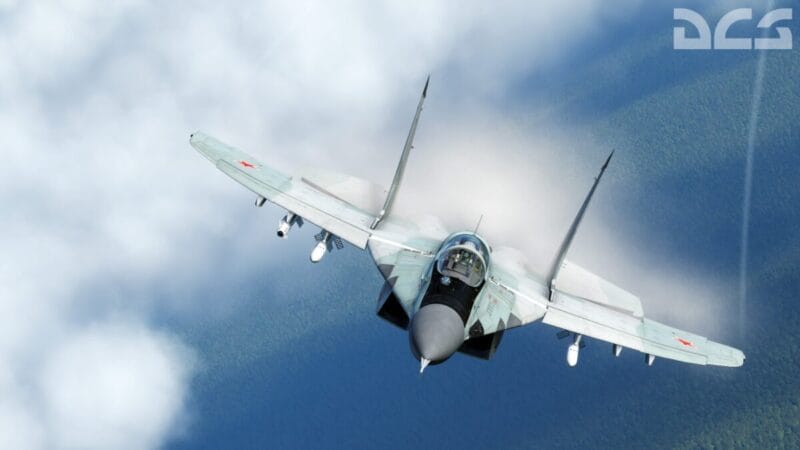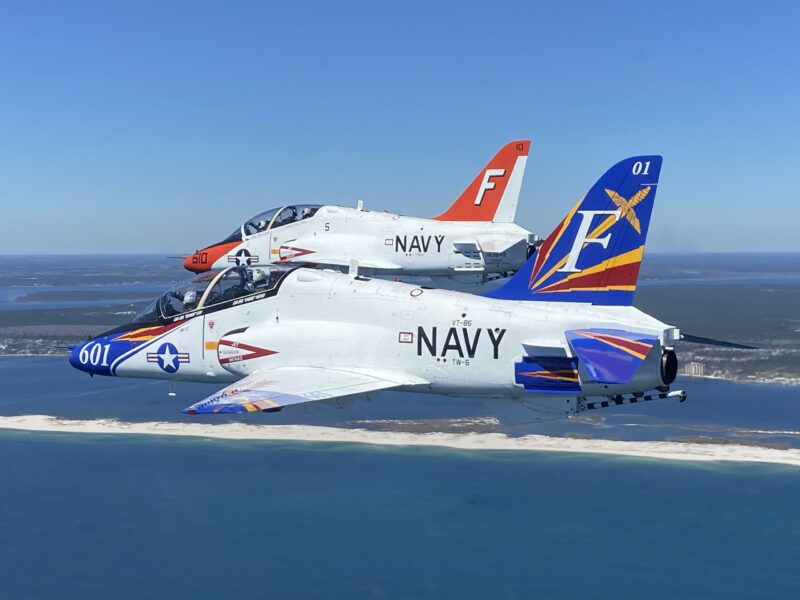X-Plane 12.2 Full Release Review: Graphics, Performance, and What’s Next
A New Era of Desktop Flight Simulation
This X-Plane 12.2 full release is all about discussing X-Plane 12‘s delivery of incredible flight simulator performance and experiences. Since X Plane 12 first arrived, it promised not just incremental upgrades but a full reimagining of what a desktop flight simulator could be.
Laminar Research set out to create an experience that would feel alive in the pilot’s seat. The goal was to merge photorealistic visuals with uncompromising physics to make every takeoff, cruise, and landing as authentic as possible.
I personally have been impressed with the quite large steps forward in both visual quality and overall system performance from the 12.0 to 12.1 and now with 12.2 being much more graphics focussed.
With X-Plane 12.2 full release now officially out of beta and available to everyone, it’s the perfect moment to look back at what has been accomplished and what lies ahead for all of us flight sim fanatics in 2025 and beyond.
This article dives into each major release—12.0, 12.1, and 12.2—to explore not only what has changed but why it matters to your experience in the cockpit.
X-Plane 12.0: Building the Foundation for Realism
Released in December 2022, X-Plane 12.0 was more than a version number change. It was an overhaul of core systems, laying the groundwork for everything that followed. It was a release that gave us an updated UI and started with more performance and better graphics from the X Plane 12 days previous to this point.
Let’s unpack what made X-Plane 12.2 full release itself so significant:
1. Photometric Lighting Engine
One of the most dramatic changes was the photometric lighting system. Unlike older simulators that relied on basic HDR tricks, this system mimics how light really behaves in the physical world.

- Sunlight scatters through the atmosphere, causing subtle hues at dawn and dusk.
- Airport lights look properly bright against dark terrain without glowing unrealistically.
- Cockpit lighting dynamically adapts to the exterior conditions, so switching from daylight to clouds isn’t a jarring contrast.
What Really is a Photometric Lighting Engine.
The Photometric Lighting Engine in X-Plane 12 refers to a new, realistic lighting system that simulates how light behaves in the real world, based on physical principles. Unlike older lighting models that simply made scenes look good, this engine uses real-world values for light intensity and color, creating more natural and dynamic visuals.
It affects graphics by making skies, clouds, terrain, and aircraft lighting look more believable—daylight shifts more realistically, sunsets and shadows are more accurate, and overall visibility and brightness change in response to atmospheric conditions, enhancing immersion for pilots and simmers.
The increase in more realistic light has made a considerable difference in the overall experience but came with some issues that only with 12.2 really appear to be resolved.
Why this matters:
You no longer need to tweak brightness settings every flight to get believable illumination. The world just looks right, whether you’re chasing a sunrise or shooting a night approach.
2. Dynamic Weather and Volumetric Clouds
X-Plane 12 introduced a fully dynamic weather engine that uses real METAR data to generate layered, volumetric clouds.

Instead of flat cloud sprites, the simulator renders clouds in 3D, with depth and movement:
- Rain shafts can be seen from miles away.
- Cloud layers blend naturally as you climb or descend.
- Flying through a cloud feels immersive—visibility reduces realistically.
What is Dynamic Weather and Volumetric Clouds.
The Dynamic Weather and Volumetric Clouds system in X-Plane 12 introduces a more immersive and realistic atmosphere by simulating constantly changing weather patterns and 3D cloud formations. Instead of relying on static or pre-set conditions, the sim now generates weather that evolves over time and space. This also includes wind, precipitation, and storms that move naturally across the world.
Volumetric clouds are fully three-dimensional and interact with light, giving more convincing visuals when flying through or above them. This upgrade makes the whole experience of flying feel more alive and challenging, especially as weather affects visibility, turbulence, and aircraft performance in real-time.
How it enhances the experience:
Approaches in deteriorating weather are now genuinely challenging. You can spot gaps in the overcast to plan your descent or watch convective buildups evolve along your route.

3. Enhanced Water Rendering
Water simulation received its own major upgrade. X-Plane 12.0 introduced:

- Dynamic wave patterns driven by local wind speed.
- Realistic reflections of aircraft and the environment.
- Improved coastline blending.
What is Enhanced Water Rendering.
Enhanced Water Rendering in X-Plane 12 significantly upgrades how water surfaces are displayed, creating more realistic oceans, lakes, and rivers. The system uses advanced techniques to simulate reflections, wave patterns, and dynamic water movement based on real-world physics.
This means X-Plane 12.2 full release has water that now reacts more naturally to weather changes, such as wind and storms, creating more lifelike effects like choppy seas or calm, reflective surfaces. The result is a more immersive experience for pilots, with water surfaces appearing more detailed and realistic, especially when viewed from altitude or while flying low over the water.
Why it’s important:
For floatplane pilots or anyone operating near shorelines, water now feels like a living surface rather than a static texture.
4. Revamped Autogen and Vegetation
The default scenery saw dramatic improvement:
- Region-specific buildings with better facades.
- 3D trees and forests that respond to wind.
- Denser ground clutter for more believable airports.
What has Revamped Autogen & Vegetation done for X Plane 12.
In X-Plane 12, the Revamped Autogen and Vegetation system has undergone a major overhaul to make the environment feel more natural and lifelike. The improvements include:
- Better 3D Models for Vegetation: Trees and plants now have more detailed, realistic 3D models, replacing the older 2D flat billboards that would often look unnatural from certain angles. The new models also respond better to lighting conditions, creating a more immersive visual experience.
- Improved Distribution and Variety: Autogen (the system that generates buildings, roads, and vegetation) has been enhanced with smarter algorithms that place objects in a way that mirrors real-world geography more closely. Vegetation is now more varied, with different types of trees and plant life appearing depending on the region and climate, creating a more authentic landscape.
- Dynamic Seasons: With the new updates, vegetation changes with the seasons, showing different foliage during spring, summer, fall, and winter. This adds to the realism, as the environment shifts dynamically depending on the time of year.
- Better Object Placement: The system now places buildings and trees in more logical locations, such as avoiding dense forests in urban areas and ensuring vegetation matches the terrain’s elevation and climate. This makes for more believable cities, towns, and rural areas.
Overall, the revamped autogen and vegetation system makes the world in X-Plane 12 feel much more organic, with a greater sense of realism in how the natural and built environments blend together.
This makes VFR navigation easier and more visually rewarding for all your cross country flights.
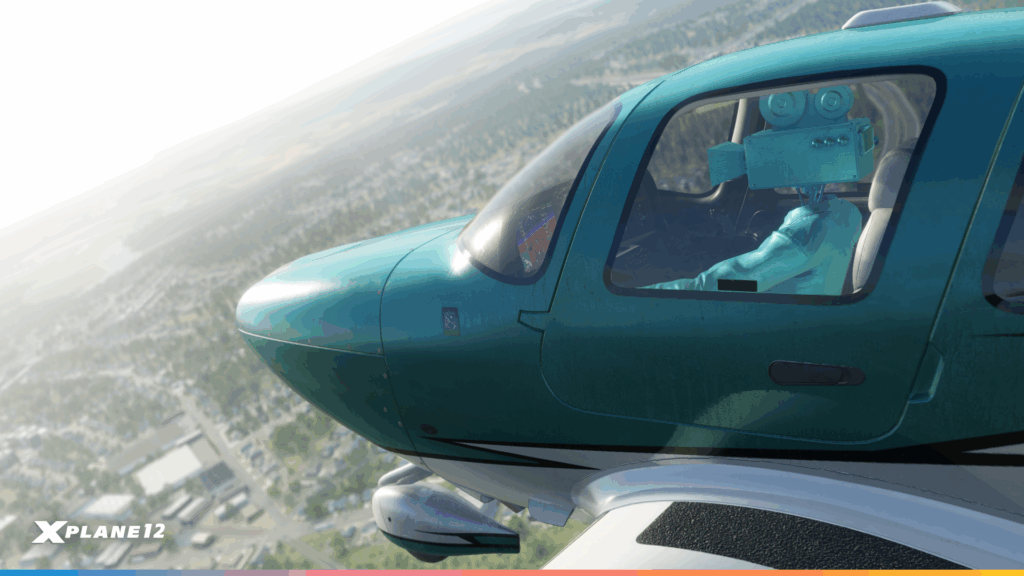
5. Flight Model Advancements
X-Plane’s aerodynamic simulation has always been best-in-class and the reason those of us that have flown real aircraft come back to it time after time. The improvements in 12.0 have added a considerable amount of additional realism. Let me explain:
- More precise modeling of propwash and downwash.
- Accurate ground effect transitions.
- Improved stall and spin dynamics.
Here’s how Laminar Research have improved the flight dynamics and how X Plane 12 stacks up against other simulators:
1. More Accurate Aerodynamics:
X-Plane 12 introduces improved flight physics with more accurate airflow modeling. The new version better simulates the way air flows over and around aircraft, especially during complex maneuvers, stalls, and high angles of attack. This allows for more realistic handling characteristics, particularly for different aircraft types, whether small GA planes or complex airliners.
2. Realistic Turbulence and Wind Effects:
The flight model improvements have been paired with Dynamic Weather and Volumetric Clouds, allowing for more realistic interaction between aircraft and weather conditions. You’ll experience turbulence, wind shear, and crosswinds in a way that feels far more responsive and natural. This is a huge leap in simulating real-world conditions, especially when flying in stormy or turbulent weather.
3. Better Ground Effect and Low-Speed Flight:
The flight dynamics in low-speed flight, such as during takeoffs, landings, or slow turns, have been made more accurate. The ground effect (the altered aerodynamics near the surface) is now modeled with greater precision, which significantly impacts how aircraft feel when flying just above the runway or over the ground.
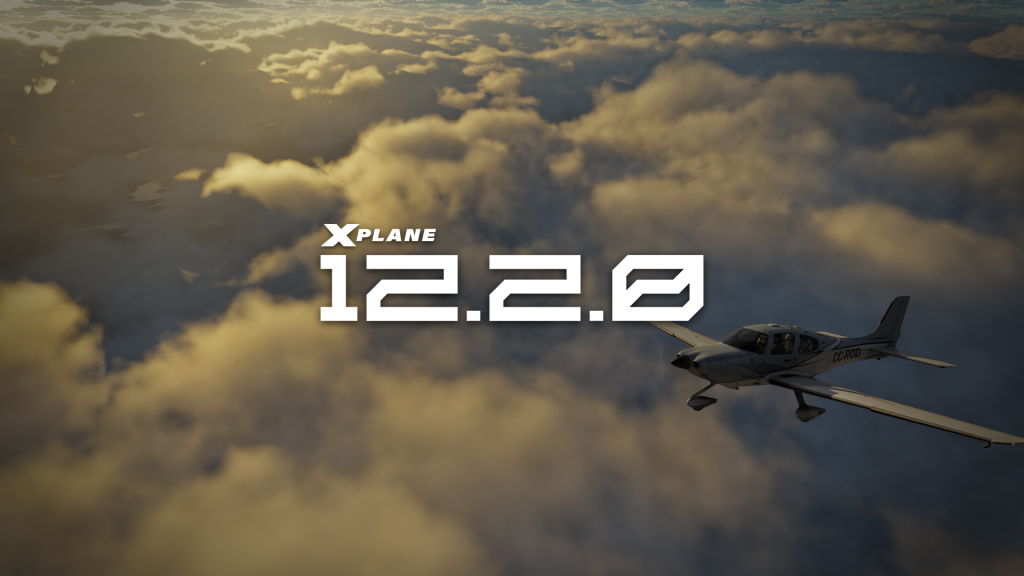
4. Enhanced Propeller and Engine Modeling:
X-Plane 12’s propeller and engine systems have been updated for more realism. The flight model now simulates the nuances of engine power, propeller effects, and thrust better than before, allowing for smoother transitions in power changes, more realistic acceleration, and deceleration behaviors.
5. Improved Aircraft-Specific Flight Models:
Developers can now create more specific flight models for individual aircraft, meaning each plane reacts in a way that closely matches its real-world counterpart. Whether you’re flying a Cessna 172 or an Airbus A320, the handling feels more true to life with better weight, balance, and response characteristics.
How Does It Compare to Other Sims?
X-Plane 12’s advancements make it one of the most realistic flight simulators in terms of flight dynamics, especially for users who prioritize accurate aerodynamics. It’s often seen as superior in handling real-world flight physics due to its blade element theory, which calculates forces on every part of the aircraft, rather than relying on pre-defined coefficients like other sims.
However, when compared to other leading sims like Microsoft Flight Simulator 2020 (MSFS) and Prepar3D, the overall experience can differ:
- MSFS offers superior visuals and weather simulation, but its flight model isn’t as deeply focused on physical realism. Many pilots and aviation enthusiasts argue that while MSFS looks amazing, its flight model still doesn’t match the complexity and realism of X-Plane 12, and is referred to more as a game than a simulator. This is evident especially when it comes to detailed, nuanced aerodynamics in challenging conditions.
- Prepar3D (a close rival to X-Plane for professional users) has long been a standard in professional aviation and military training. However, it often lags behind in some of the newer, more dynamic simulation technologies that X-Plane 12 now boasts—particularly in terms of its weather systems and autogen/vegetation realism.
Has It Made X-Plane 12 a Vast Improvement Over Other Sims?
In terms of flight dynamics and realism, X-Plane 12 is now arguably the best in its class, especially for simmer’s who value accurate, physics-driven flight models. Its advancements in the flight model have placed it ahead of competitors, offering superior aerodynamic behavior, especially under difficult weather and flight conditions.
If your primary focus is high-fidelity flight dynamics and realistic handling across all flight regimes, X-Plane 12 has definitely raised the bar. However, if you’re looking for an all-around experience that combines visuals, environment, and weather simulation, other simulators like MSFS may still have a slight edge in terms of graphical fidelity and environmental immersion.
Ultimately, X-Plane 12 is a vast improvement for those who prioritize the technical aspects of flight dynamics, and for many, it’s now considered the go-to sim for serious flight training and realistic aerodynamics.
Why pilots love it:
Every aircraft feels more nuanced. Subtle control inputs have authentic effects, and the margin between stable flight and a departure is more credible. The ability for an aircraft such as a Baron 58 or Cessna 172 to windmill and point into a crosswind is one of those little things that makes you say, Yeah thats what happened when I flew! It’s the most realistic you can get atm i believe.
X-Plane 12.1: Polishing the New Foundation
After the initial release, X-Plane 12.1 arrived in 2024 to address performance, usability, and content quality. This version focused on refinement rather than big new systems.
1. Performance Optimization
Early adopters noticed that 12.0’s volumetric clouds and lighting could tax even powerful PCs. Laminar Research invested significant time in profiling the rendering pipeline. This improvements have been incredibly good with Early adopters noticed that 12.0’s volumetric clouds and lighting could tax even powerful PCs. Laminar Research invested significant time in profiling the rendering pipeline.
The outcome:
- 10–15% average framerate increase in weather-heavy scenarios.
- Less stuttering on approach to major airports.
- Improved memory handling on systems with lower VRAM.
These optimizations made X-Plane 12.2 full release more accessible to users on midrange hardware. It’s pretty impressive with the correct settings what can be achieved for sure. Its better than X Plane 11 and was harder to run until now but the improvements have really put it in a new realm of performance even though it does not have DLSS or other NVIDIA features.
Unfortunately the FSR is still an absolute waste of time in the sim from my own experience. If your running 4k or 1440P maybe it could help but its terrible at 1080P. (Yes I know its not really aimed at a 1080P machine but VR is also terrible).
2. Updated Default Aircraft
Most of the default fleet received:
- Higher-resolution cockpit textures.
- FMOD sound improvements.
- Refined flight models.
Aircraft such as the Cessna 172, Citation X, and King Air now feel considerably more polished.
3. Smarter ATC
ATC logic improved in several ways:
- Dynamic runway assignments based on wind and traffic.
- More realistic phraseology.
- Better sequencing of departures and arrivals.
Impact:
Pilots doing full-gate-to-gate flights experienced fewer conflicts and smoother flows.
4. VR Improvements
Virtual Reality became more stable and easier to set up with X-Plane 12.2 full release:
- Simplified control mappings.
- Reduced judder and lag.
- Enhanced support for popular headsets like the Quest 3 and Valve Index.
5. Improved Plugin Compatibility
12.1 quietly fixed many issues that frustrated third-party developers adapting their aircraft and scenery. This opened the door for:
- More payware releases optimized for X-Plane 12.
- Updates to older addons that had graphical glitches or performance issues.

X-Plane 12.2: The Big Leap in Graphics and Performance
X-Plane 12.2, fully released in June 2025, is arguably the biggest single leap forward since 12.0 launched. It combines visual refinement, CPU/GPU performance gains, and smoother VR, all of which elevate the simulator’s feel.
Let’s dig into the most impactful X-Plane 12.2 full release upgrades:
1. Dynamic Lighting Refinement
While 12.0 introduced the photometric lighting engine, 12.2 perfected it:
- Ground lights blend more naturally into the scene.
- Aircraft navigation and landing lights cast more accurate spill on terrain and clouds.
- Specular reflections on wet surfaces look smoother.
Real-world effect:
Night flights over cities feel much more believable, and transitioning between day and dusk is seamless.
2. Hybrid Cloud Rendering
Volumetric clouds were a technical breakthrough in 12.0 but could cripple framerate in overcast conditions. 12.2 introduced a hybrid rendering mode:
- Volumetric clouds are retained near the aircraft.
- Distant clouds switch to optimized billboard sprites.
- New temporal filtering reduces shimmering.
Performance impact:
Users have reported 5–10% FPS improvements, especially in VR or ultrawide setups.
3. Terrain and Texture Upgrades
Laminar added more high-resolution regional textures:
- Urban areas have sharper building facades.
- Rural tiles blend more convincingly at low altitude.
- Snow and seasonal variations were partially prepared (though full seasons are likely coming in 12.3).
Practical difference:
VFR pilots navigating by visual landmarks find scenery more intuitive and immersive.
4. Antialiasing Improvements
Aliasing was a common complaint in 12.0 and 12.1. 12.2 added:
- Enhanced MSAA and temporal antialiasing.
- Better edge smoothing on cockpit displays and scenery.
Outcome:
Sharper visuals, less flicker, and more clarity on approach.
5. CPU and VRAM Optimizations
X-Plane 12.2 refined background processes:
- Scenery loading and weather generation are spread across more CPU cores.
- VRAM usage has been reduced by up to 400 MB in dense areas, helping GPUs with limited memory.
For most pilots:
This translates to higher, more stable FPS during busy approaches and fewer micro-stutters.
What’s Next? X-Plane 12.3 Rumors and Expectations
Though Laminar has not issued a formal roadmap, insider sources suggest X-Plane 12.3 could enter testing by late 2025.
Likely Features:
- Seasonal Terrain: Snow cover and vegetation changes based on date and latitude.
- Expanded Weather API: Allowing custom weather scenarios for training and storytelling.
- Improved VR Tools: More intuitive cockpit interaction in VR.
- Further Vulkan Optimization: Additional CPU offloading for smoother heavy-weather performance.
While these rumors are not officially confirmed, they align with long-requested community priorities.
Wrap-Up: Three Years of Transformation
From its first release to the current version, X-Plane 12 has redefined what’s possible in civilian flight simulation.
Major Achievements So Far:
✅ Photometric lighting and realistic night environments
✅ Volumetric clouds and dynamic weather
✅ Dramatically improved terrain and autogen
✅ Accurate flight physics and propwash modeling
✅ A polished default fleet with authentic systems
✅ Smoother VR with better performance
✅ Optimized rendering for higher FPS and lower VRAM usage
✅ Modern plugin ecosystem compatibility
If you haven’t flown X-Plane 12 recently, now is the best time to return. With version 12.2 delivering both visual fidelity and tangible performance improvements, the simulator has never felt more complete.
And with 12.3 rumored to be just around the corner, Laminar Research is clearly committed to building on this momentum.
The Complete Beginner’s Guide to DCS World
Welcome to the world of Digital Combat Simulator (DCS World), the ultimate flight combat simulation that brings the thrill of…
Comparing Real World Aviation Procedures to Flight Sim Techniques.
Flight simulators have grown into sophisticated training tools, bridging the gap between virtual flight and real-world aviation….
Mastering Dogfighting in DCS World and Falcon BMS: Max-Perform Your
This post covers essential techniques, cues, and parameters that new combat pilots need to dominate close-range dogfights in DCS World…

Full Guide: DCS Balkans Map + All Upcoming DCS World
Full Guide: DCS Balkans Map + All Upcoming DCS World Modules. Summary: Eagle Dynamics and OnReTech have officially announced DCS: Balkans,…
DCS World T-45 Goshawk Formation Flying for Beginners Tutorial .
Military Formation Flying in DCS: Your First Flight in the T-45 Goshawk. So, you’ve got your wings (virtually speaking), strapped into…
DCS WORLD T-45 Goshawk EASY Navigation for Beginners.
DCS WORLD T-45 Goshawk EASY Navigation for Beginners is simply that. We do our planning in the DCS World Editor…
How the U.S. Navy Trains Jet Pilots: A Complete T-45
Welcome to Letsflyvfr.com guide to T-45C Goshawk Training – How the U.S. Navy Trains Jet Pilots so you can train…
DCS WORLD – The MB-339 by IndiaFoxtEcho: A Complete Overview.
The MB-339 occupies a very particular niche in DCS World: it’s not a fighter, not a frontline attack jet, but…
How to Move DCS World to Another Drive – Tutorial.
Moving DCS World off your Windows drive is a great way to free up space especially with DCS now taking…

Author
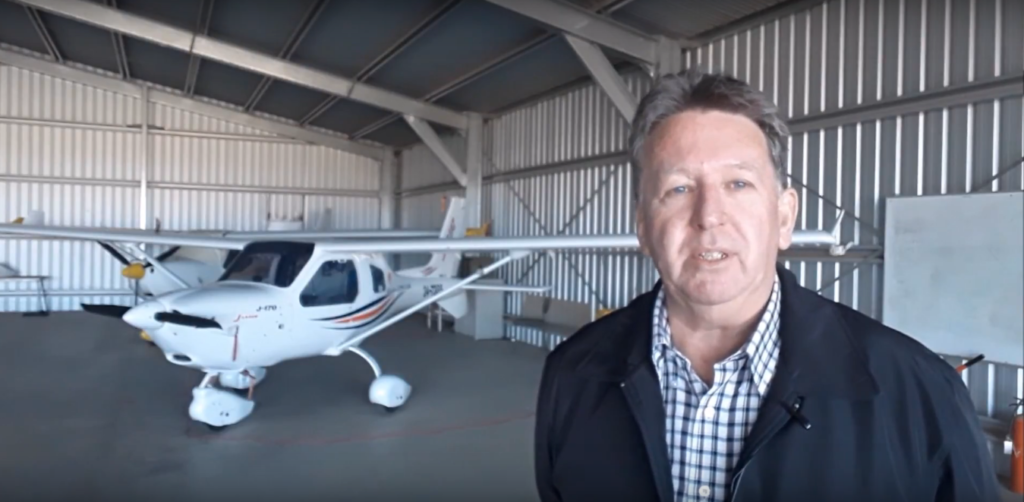
Brendon McAliece (Aka Gunnie) is a military veteran with 23 years working on Jet Fighters, their weapons systems and ejection seat/module systems as well as munitions and R&D. Involved with flight simulation since the 1980s, he has flown all the major flight simulators over the years.
He is an Australian expat who has lived in Malaysia, UK, Saudi Arabia and more recently Thailand. He is a multi-lingual blogger who loves to share his life experiences here on LetsFlyVFR.com and DreamingGuitar.com, with his lifestyle and Travel experiences Blog plus his Dreaming Coffee website.
Learn More @
DreamingGuitar.com – DreamingCoffee.com – LetsFlyVFR.com
( HOME – BLOG – SHOP – ABOUT )
This page has been viewed 0 times.
As an Amazon affiliate I may benefit from qualifying sales.
